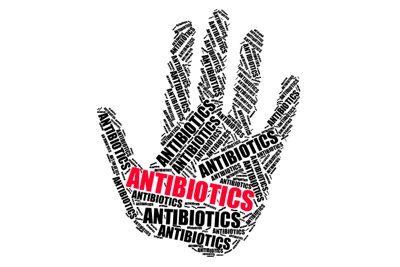
Amid the growing clamor of warnings over antibiotic resistance on a global scale, public awareness campaigns about the issue have been rare in developing countries.
The government of Indonesia, however, has been working to tackle the issue, reports Jakarta Post. It has set up the Antimicrobial Resistance Control Committee (KPRA) to draft a national action plan. The plan will identify how the Asian nation can reduce the overuse of antibiotics in humans, animals and plants.
“If antibiotics are used on livestock, they will infect people who consume its products, such as meat and milk,” said the head of KPRA, Harry Parathon. “This also applies to shrimp and fish. We also have to monitor antibiotics used on them.”
Farmers may not even be aware they are giving their animals antibiotics in feed or water, according to an official at the Ministry of Agriculture. Labels may describe antibiotics as “feed additives,” without specifying a product name.
With such a complex issue, involving medical and veterinary experts, and ministries of agriculture and fishing, the committee has said it will take time to draft the national plan. As well as agricultural use of antibiotics, it will also consider public misperceptions about these drugs, unrestrained antibiotic prescriptions by doctors, and poor regulation over market access.
Global approach
Ahead of discussions this week at the United Nations’ General Assembly, the U.N. Food and Agriculture Organization has pledged to support countries in their development of strategies to tackle the spread of antimicrobial resistance through the food supply chain.
Among the measures taken by the FAO is the publication last week of its Action Plan on Antimicrobial Resistance.
“Antimicrobial medicines play a critical role in the treatment of diseases of farm animals and plants,” according to the Action Plan. “Their use is essential to food security, to our well-being, and to animal welfare. However, the misuse of these drugs, associated with the emergence and spread of antimicrobial-resistant micro-organisms, places everyone at great risk.”
Much attention is focused on exposure to antimicrobial-resistant pathogens in hospitals, but FAO says their presence in farming systems make food another route for the transfer of resistance. This means antimicrobial resistance can affect food safety, food security and the livelihood of millions of farming households across the world.
Although declining, it is still common for antibiotics to be added to animal feeds at low concentrations to stimulate growth, according to the FAO. Global use of antimicrobials in animal production has been estimated at 60,000 metric tons annually, and this is set to increase as demand for animal products continues to strengthen.
Among the solutions to reduce antimicrobial use in animal agriculture suggested by the FAO are to follow best practice for biosecurity, hygiene and husbandry, the adoption of global standards for measuring drug use in farm livestock, and more research into alternative products and how resistance is transferred from animal wastes into the environment.

















